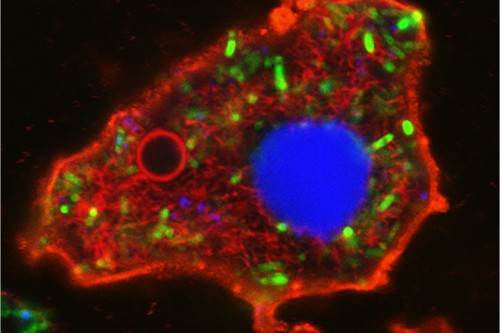Sep 15, 2022 (Nanowerk News) Over the past two years, machine learning has revolutionized protein structure prediction. Now, three papers in Science describe a similar revolution in protein design. In the new papers, biologists at the University of Washington School of Medicine show that machine learning can be used to...
Saturn’s rings and tilt could be the product of an ancient, missing moon
Sep 15, 2022 (Nanowerk News) Swirling around the planet’s equator, the rings of Saturn are a dead giveaway that the planet is spinning at a tilt. The belted giant rotates at a 26.7-degree angle relative to the plane in which it orbits the sun. Astronomers have long suspected that this...
Researchers still fail to print thin-film transistors with metal oxides onto heat-sensitive materials
Sep 15, 2022 (Nanowerk News) The bar was undoubtedly set high: In the research project Functional Oxides Printed on Polymers and Paper – FOXIP for short – the goal was to succeed in printing thin-film transistors on paper substrates or PET films. Electronic circuits with such elements play an important...
Pioneering research using bacteria brings scientists a step closer to creating artificial cells with lifelike functionality
Sep 15, 2022 (Nanowerk News) Scientists have harnessed the potential of bacteria to help build advanced synthetic cells which mimic real life functionality. The research, led by the University of Bristol and published in Nature ("Living material assembly of bacteriogenic protocells"), makes important progress in deploying synthetic cells, known as...
Biomimetic dual-color domes programmable for encryption
Sep 15, 2022 (Nanowerk News) Many organisms in nature have evolved spots with two structural colors on their bodies, like the Papilio Palinurus butterfly. The green color on its wings derives from the turquoise-yellow dual color spots (Figure). Imitation of such dual-color spots is believed to inspire designs of functional...
Physicists generate new nanoscale spin waves
Sep 15, 2022 (Nanowerk News) Strong alternating magnetic fields can be used to generate a new type of spin wave that was previously just theoretically predicted. This was achieved for the first time by a team of physicists from Martin Luther University Halle-Wittenberg (MLU). They report on their work in...
Scientists teach a robot when to have a sense of humor
Sep 15, 2022 (Nanowerk News) No one can really agree on what makes each of us laugh, so designing an artificial intelligence (AI) system with a sense of humor is enormously challenging. Researchers at Kyoto University laughed off the challenge by developing an AI that appropriately detects and responds to...
Hydrodynamic electrons seen to break a fundamental limit
Sep 14, 2022 (Nanowerk News) A new study from the Weizmann Institute of Science in collaboration with Manchester University and UC Irvine shows that an electronic fluid can flow through materials without any electrical resistance, thereby perfectly eliminating a fundamental source of resistance that forms the ultimate limit for ballistic...
Breakthrough reported in machine learning-enhanced quantum chemistry
Sep 14, 2022 (Nanowerk News) The equations of quantum mechanics provide a roadmap to predicting the properties of chemicals starting from basic scientific theories. However, these equations quickly become too expensive in terms of computer time and power when used to predict behavior in large systems. Machine learning offers a...
Robots that recognize and express intentions
Sep 14, 2022 (Nanowerk News) The digital and physical worlds are becoming more and more populated by intelligent computer programmes called agents. Agents have the potential to intelligently automate many daily tasks such as maintaining an agenda, driving, interacting with a phone or computer, and many more. However, there are...










